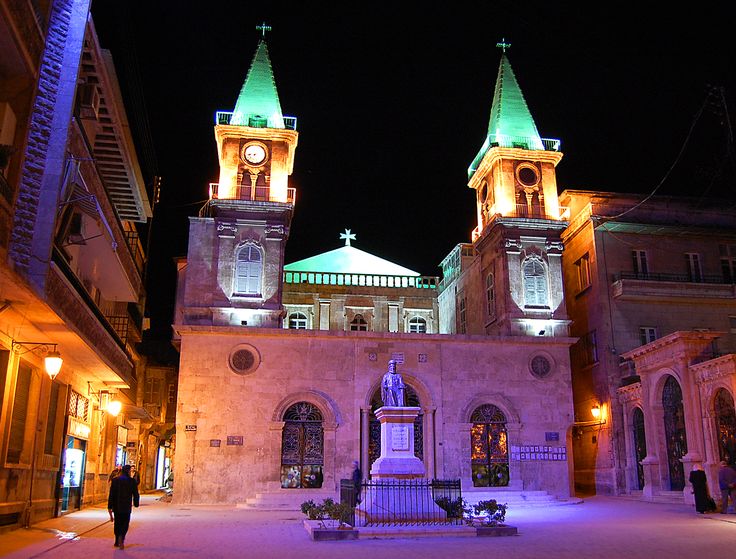Brad… Birth place of Maronite Church in the World
In the Festivity of Mar Maron in the ninth of February, life was born again among the ruins of Brad, a village located north west of Aleppo.
Who is Mar Maron? Mar Maron is the father of the Maronites. He lived in Brad between 370 and 423 AD, devoted himself for worship in a place three kilometers south of the village of Brad.
In his book Theoroditus, Bishop of Qrosen 393-459 AD, the only biographer of Mar Maron, described Maron in his book “Chosen by God” and a great teacher, who started hermitic traditions in the open air. He built a cottage on the ruins of a Roman temple and devoted it as an altar.
After his death a church was built whose ruins are still in the place. Inscriptions on the stones say that the church was built between 399 and 402 AD. Theodoritus said that Maron was a unique man whom God had granted the power of healing bodies and souls. When Maron died he was buried in the smaller church, in the nave of the temple beside the Church of Julianus.
An arch was built in the shape of an arch of victory between the two churches which is still erect. Such arches were built in honor of Roman heroes, victors in wars. That arch was the first built in honor of a Christian saint, making of this a tradition of honoring Christian martyrs.

Brad between the past and the present Brad was a small village encircling the pagan temple mentioned above. Later the village expanded into a big city located on the range of mountains of Simeon, 45km from Aleppo, and 10 km from the Church of St. Simeon. In the fourth century the city extended westward with luxurious houses, large farms and several oil presses. In 496 AD the Byzantine governor built a palace north of the city.
Brad became an important religious center when all of its inhabitants embraced Christianity, and three churches and two monasteries were built to accommodate priests. A pole was erected for hermits. The Church of Julianus was built at the highest point in the city. It was the largest after the church of St. Simeon the Stylist in Tall A’ara.
It was given the name of the governor who built it. It was 42 m long and 22 m wide, with three courtyards separated by two lines of ornamented Corinthian columns, and 10 gates, an indicator of the large numbers of worshippers who used to visit it. Writings on the walls indicate that it was built at the end of the fourth century.
Years later, a smaller church, with the same design, was annexed to the main church in the north. Between the two churches an arch was built over the tomb of Mar Maron which is a simple tomb like all tombs of saints and monks.
Now, the region started to attract visitors and tourists. Two years ago a project was launched in cooperation with a Swiss group to construct a net of roads 60km long for pilgrims. These roads pass through most of the villages and historical sites and in the old cities like Brad, Kimar and others, in the region.
_____________________________________________________________________________________
*Mar is a Syriac title means saint.
Haifaa Mafalani

